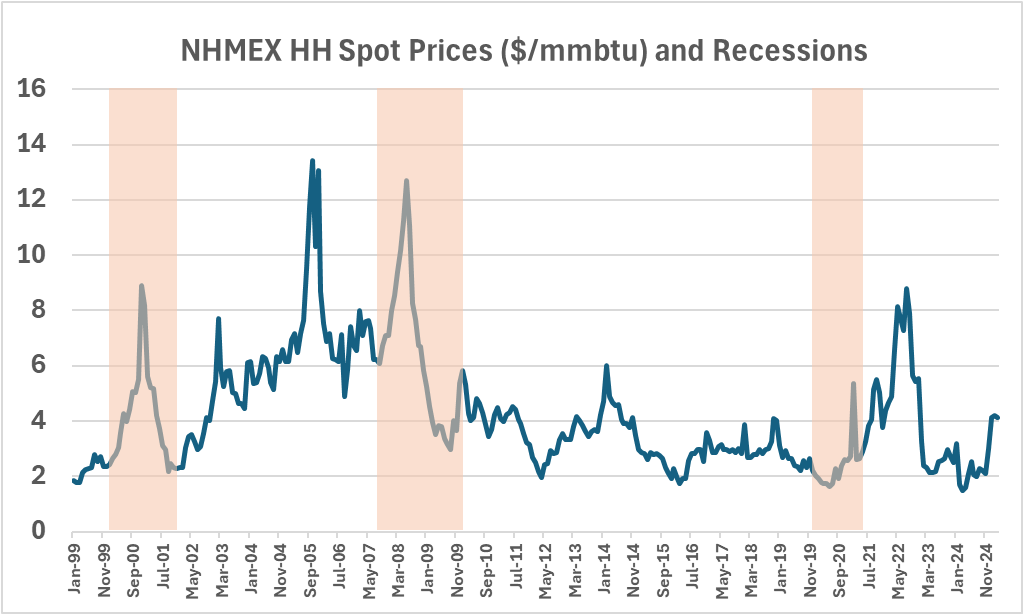Nat Gas and Recessions
With the threat of a looming recession dominating headlines, it’s time to take a brief look at energy prices during recent economic downturns. When it comes to natural gas and its performance over the most recent three recessions, it’s difficult to see a trend other than increased volatility.
A general consensus is that gas prices will decline due to reduced industrial and residential demand. Reuters reports that natural gas prices hold up better than oil in a recession. During the financial crisis recession of 2007 – 2009, crude oil prices fell from a high of $133.88 in June 2008 to a low of $39.09 in February 2009. Over the same time period natural gas prices fell from $12.69 to $4.52.
It’s important to note that recessions have different dynamics. The financial crisis that began in 2007 saw a dramatic contraction of credit.
The downturn triggered by the pandemic included aggressive stimulus and generous credit conditions which were not present in previous recessions.
In today’s environment, there is a dramatic shift in global tariffs.
The U.S. has experienced 34 recessions since 1857, each caused by varying factors and lasting different amounts of time. The longest recession in U.S. history started in October 1873 and lasted a total of 65 months. The shortest recession in U.S. history lasted two months, from February to April 2020, during the start of the COVID-19 pandemic. Recessions in the U.S. last an average of 17 months. The five most recent recessions have lasted an average of 10.4 months.



